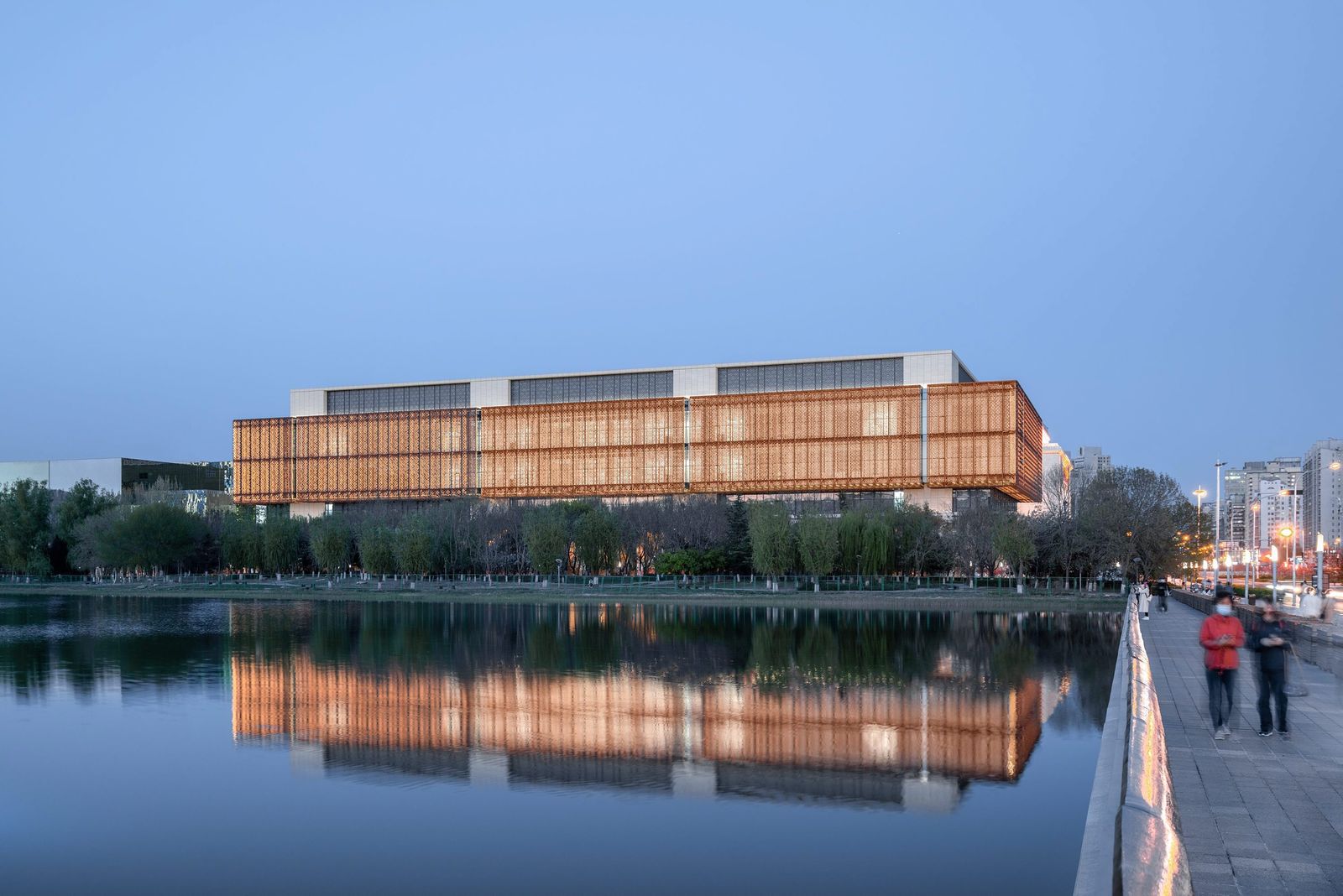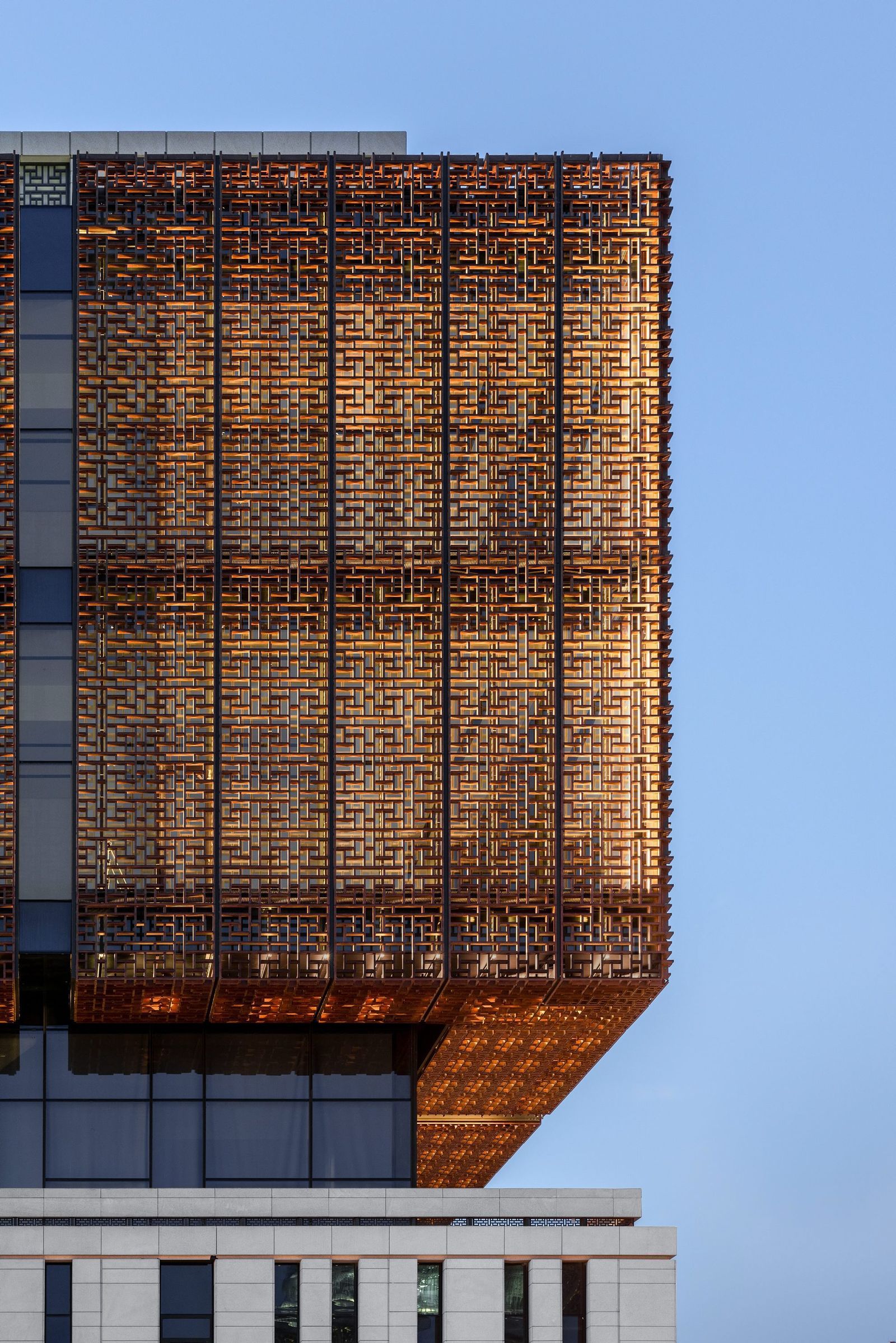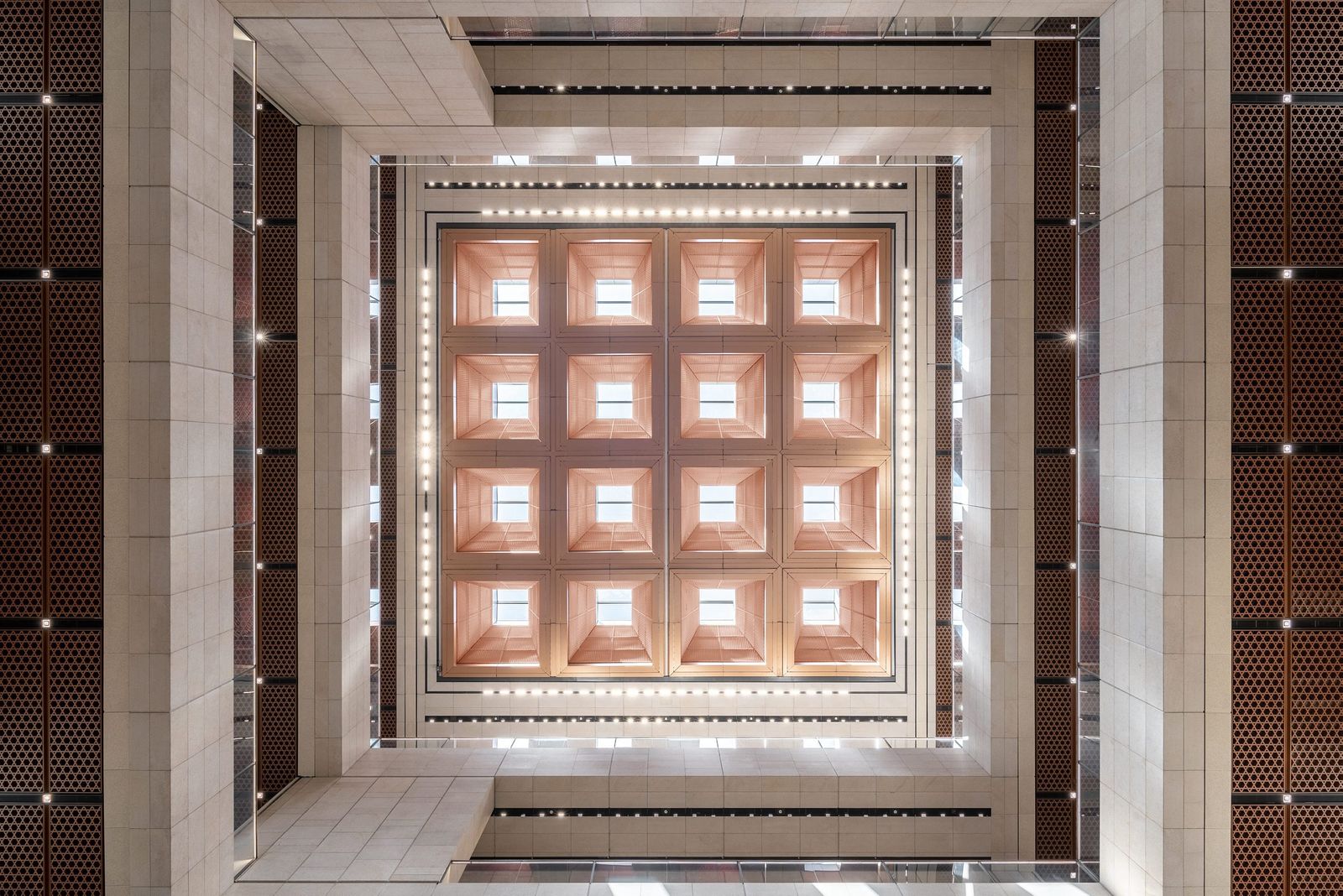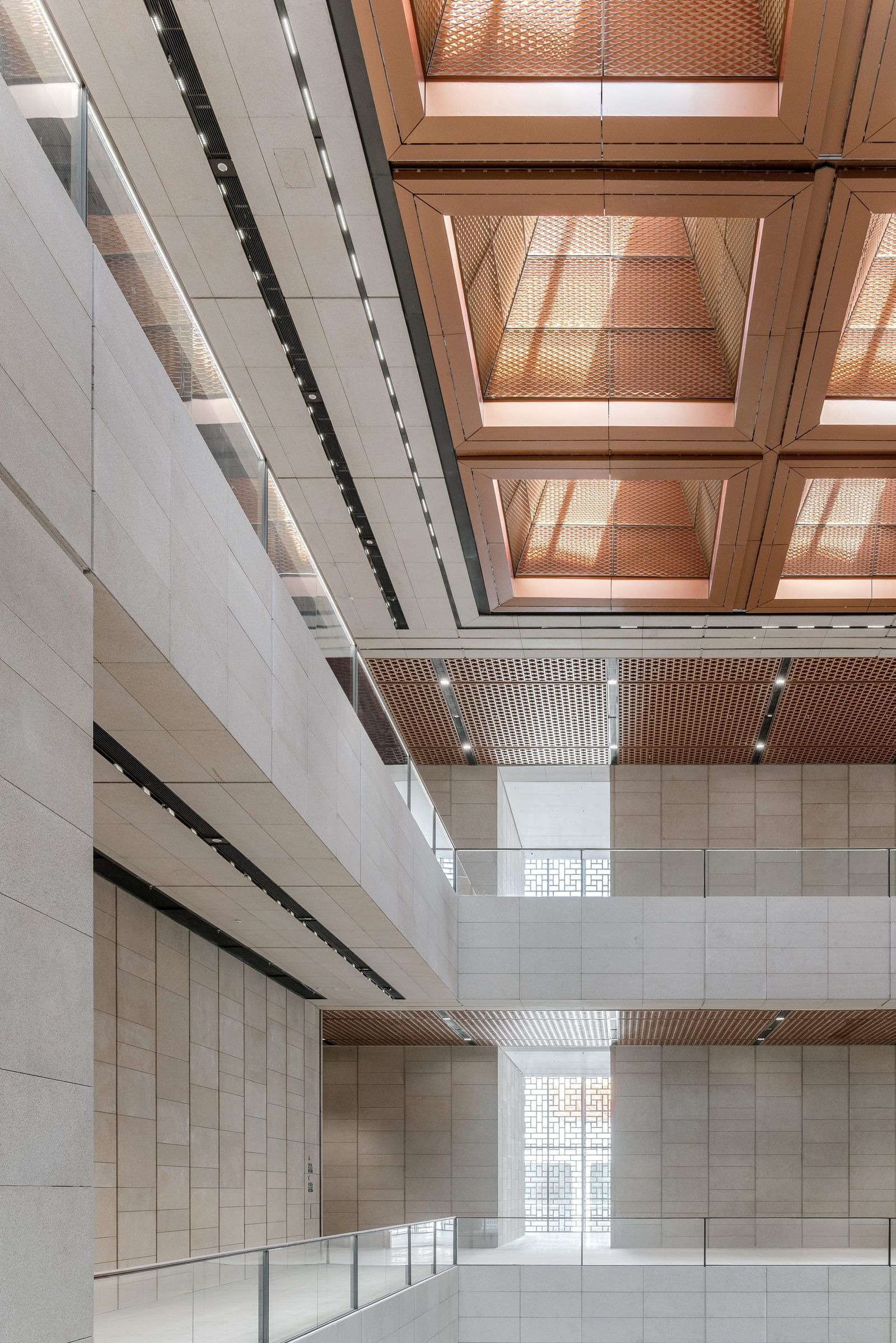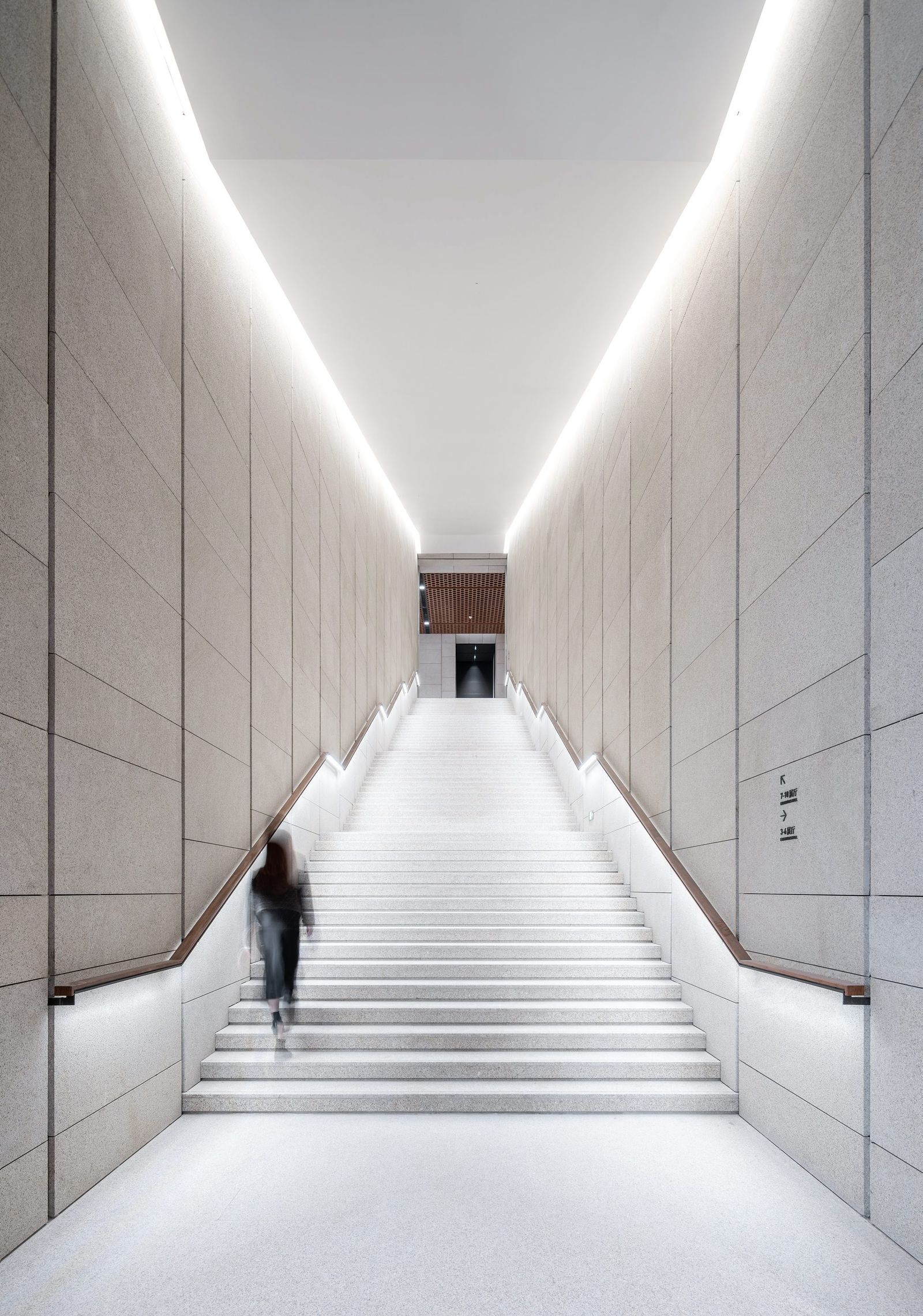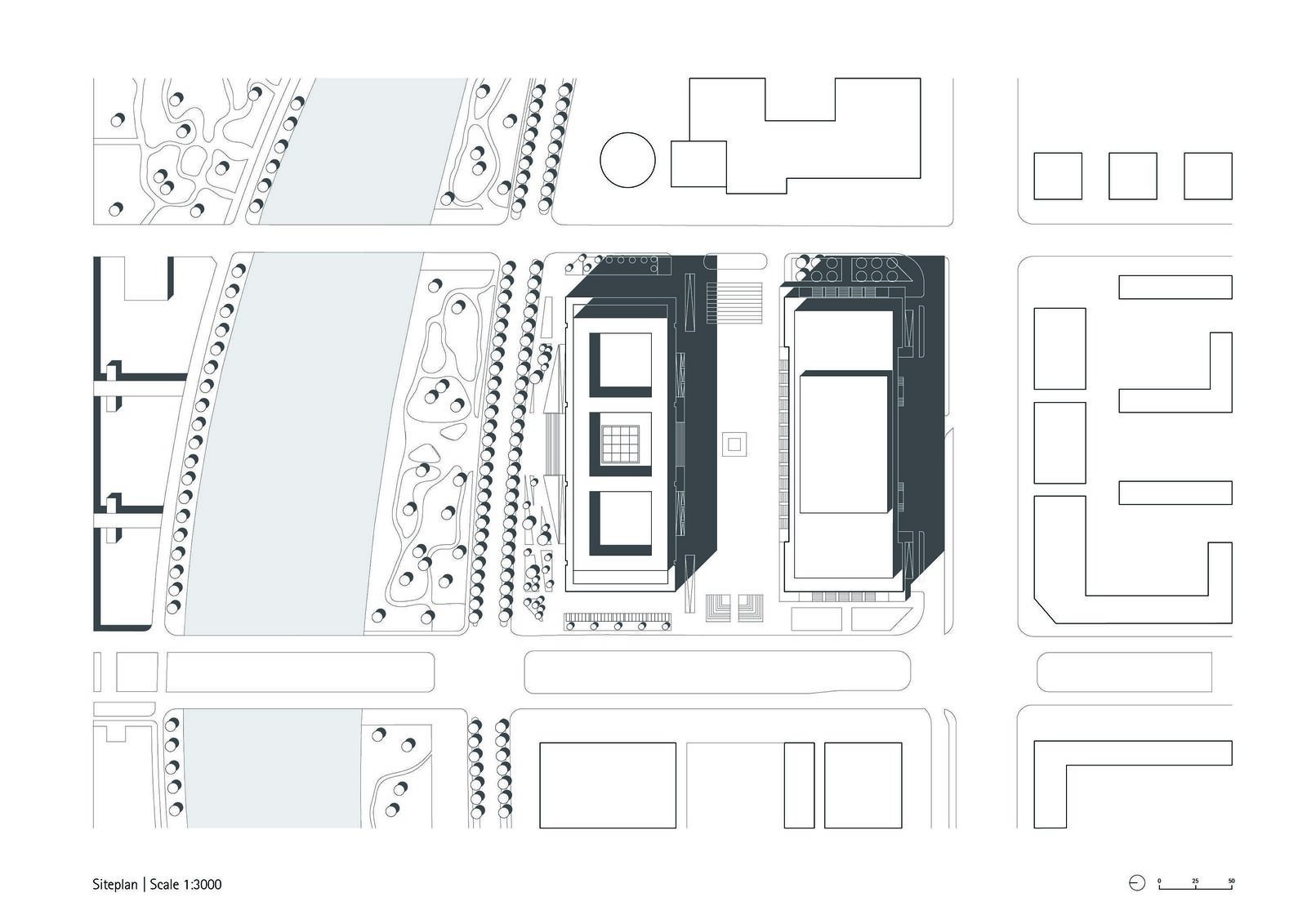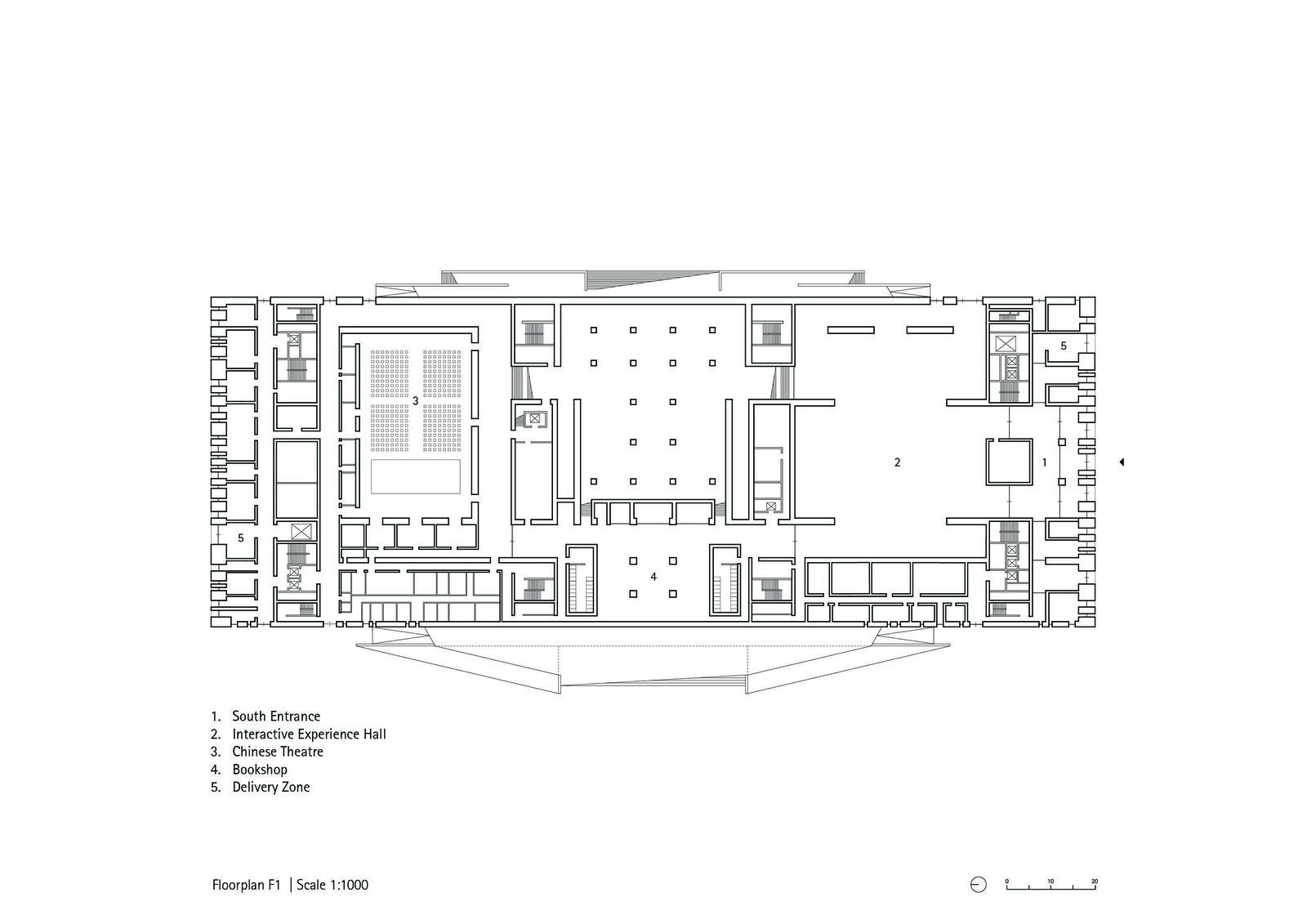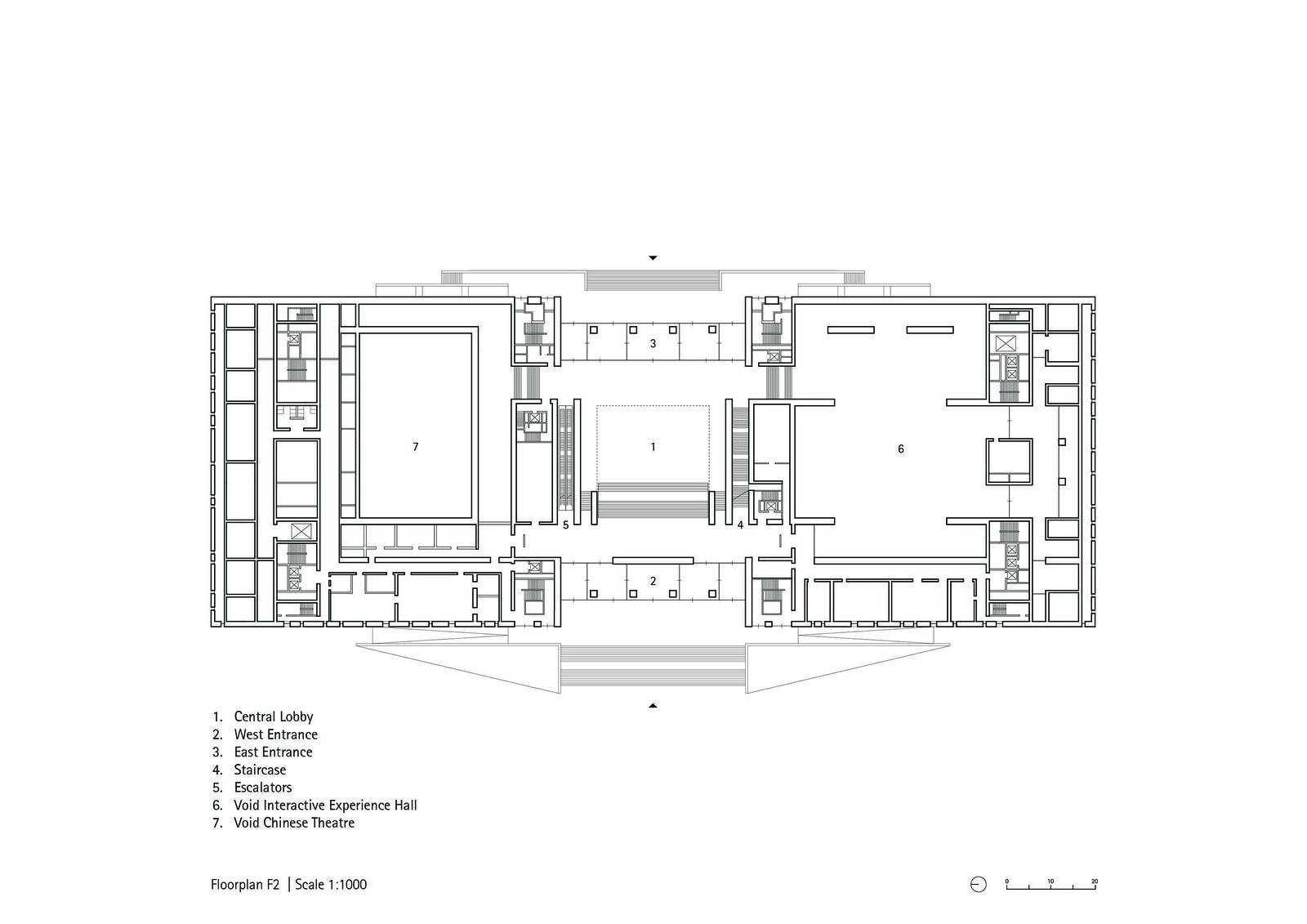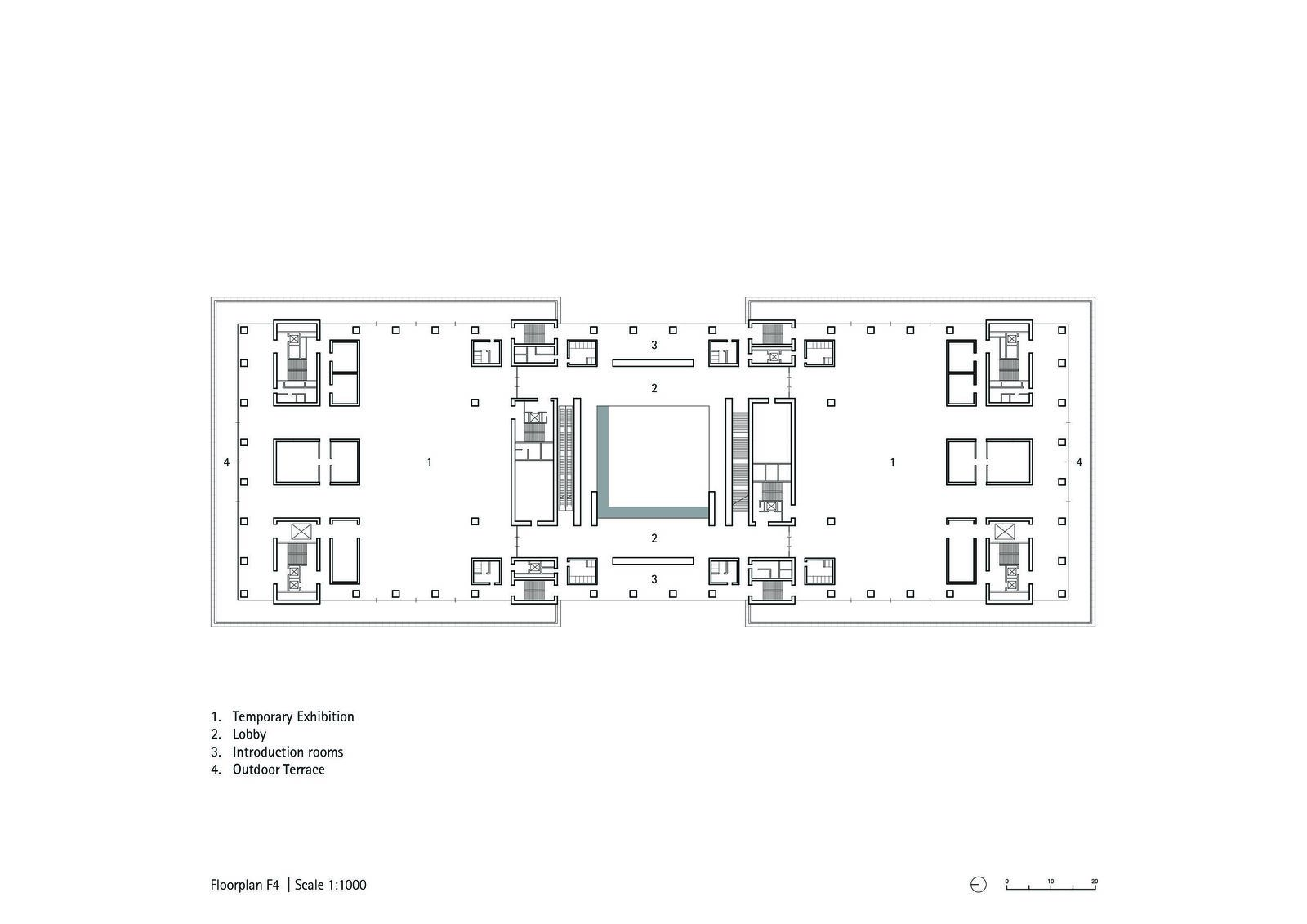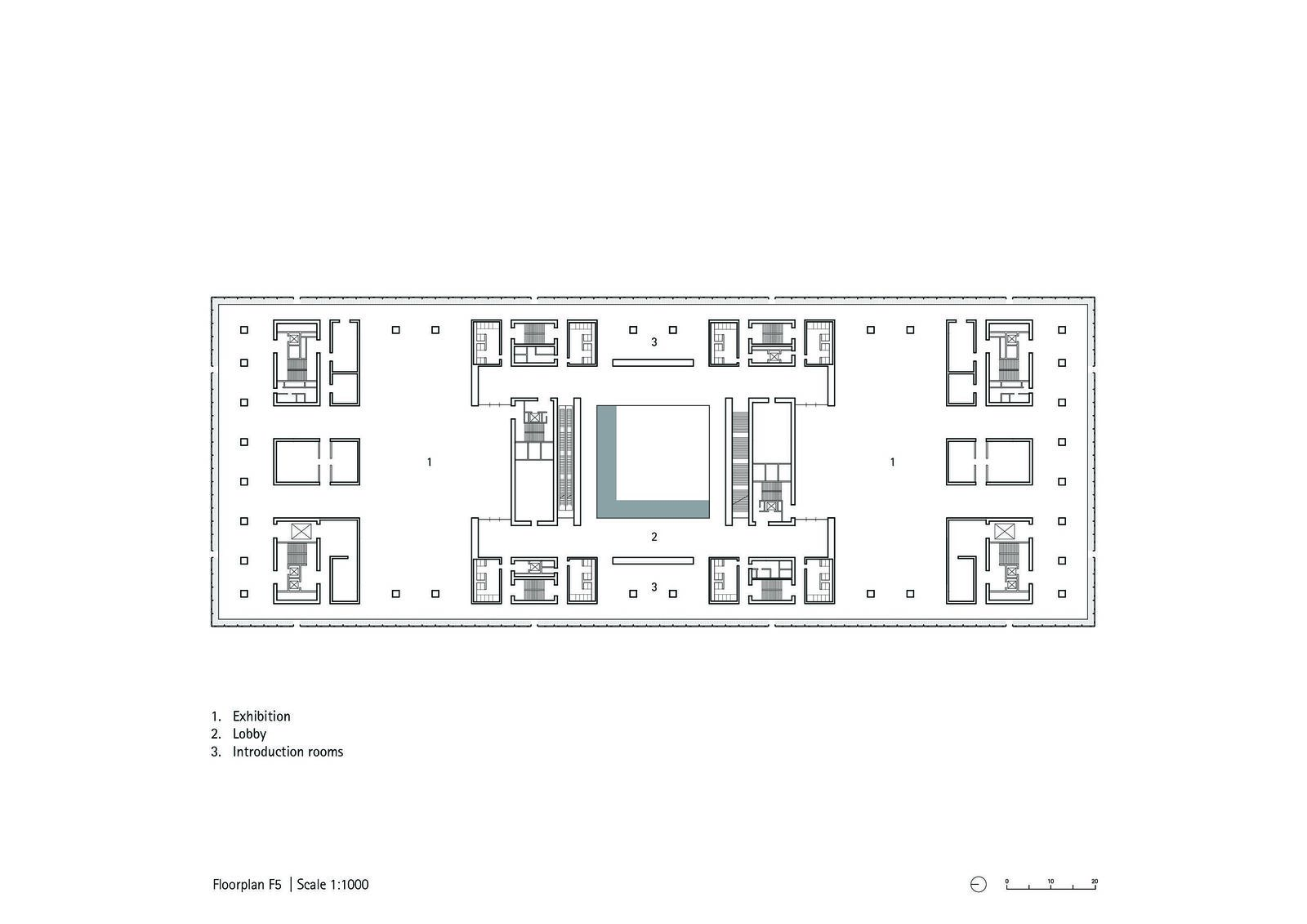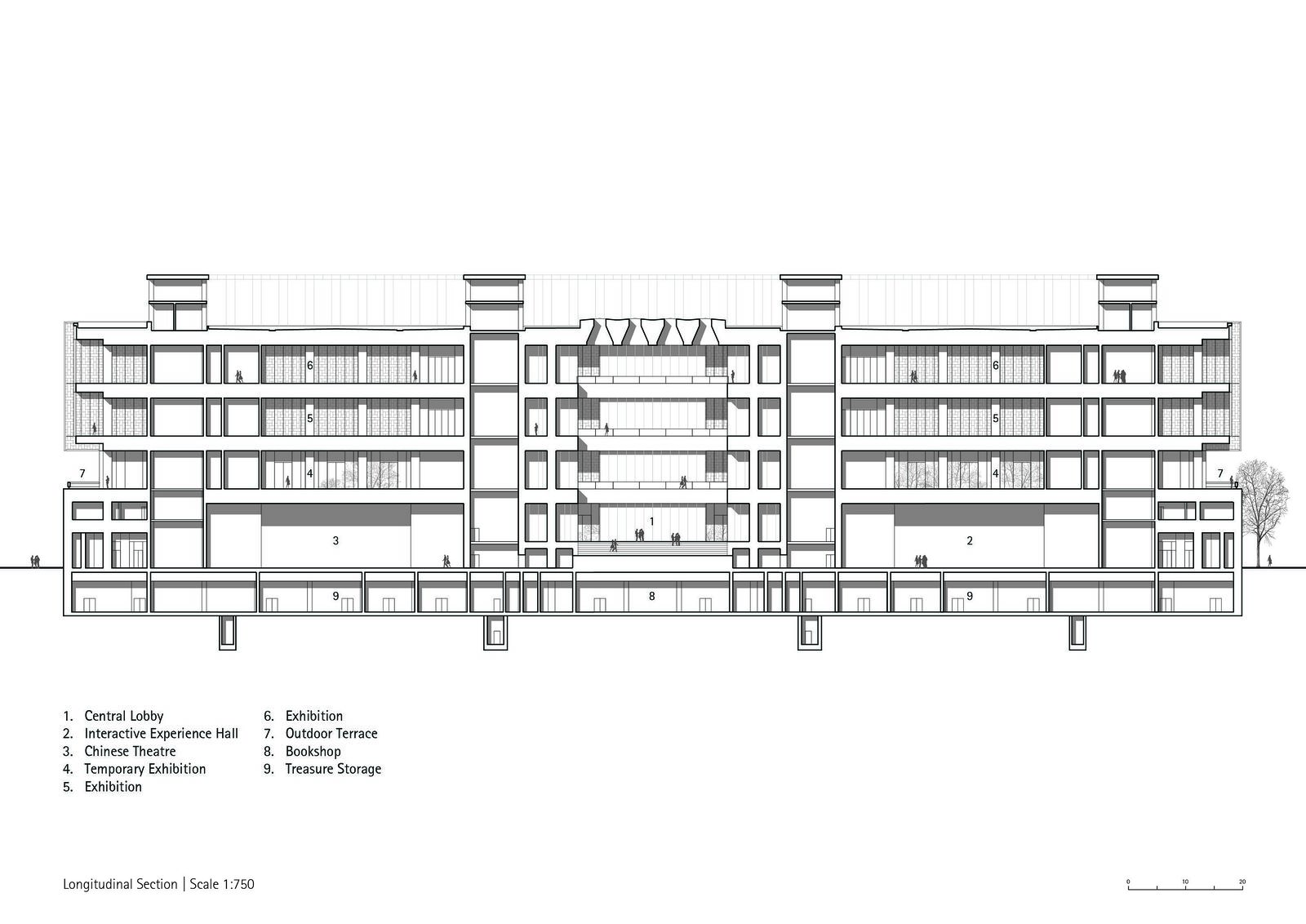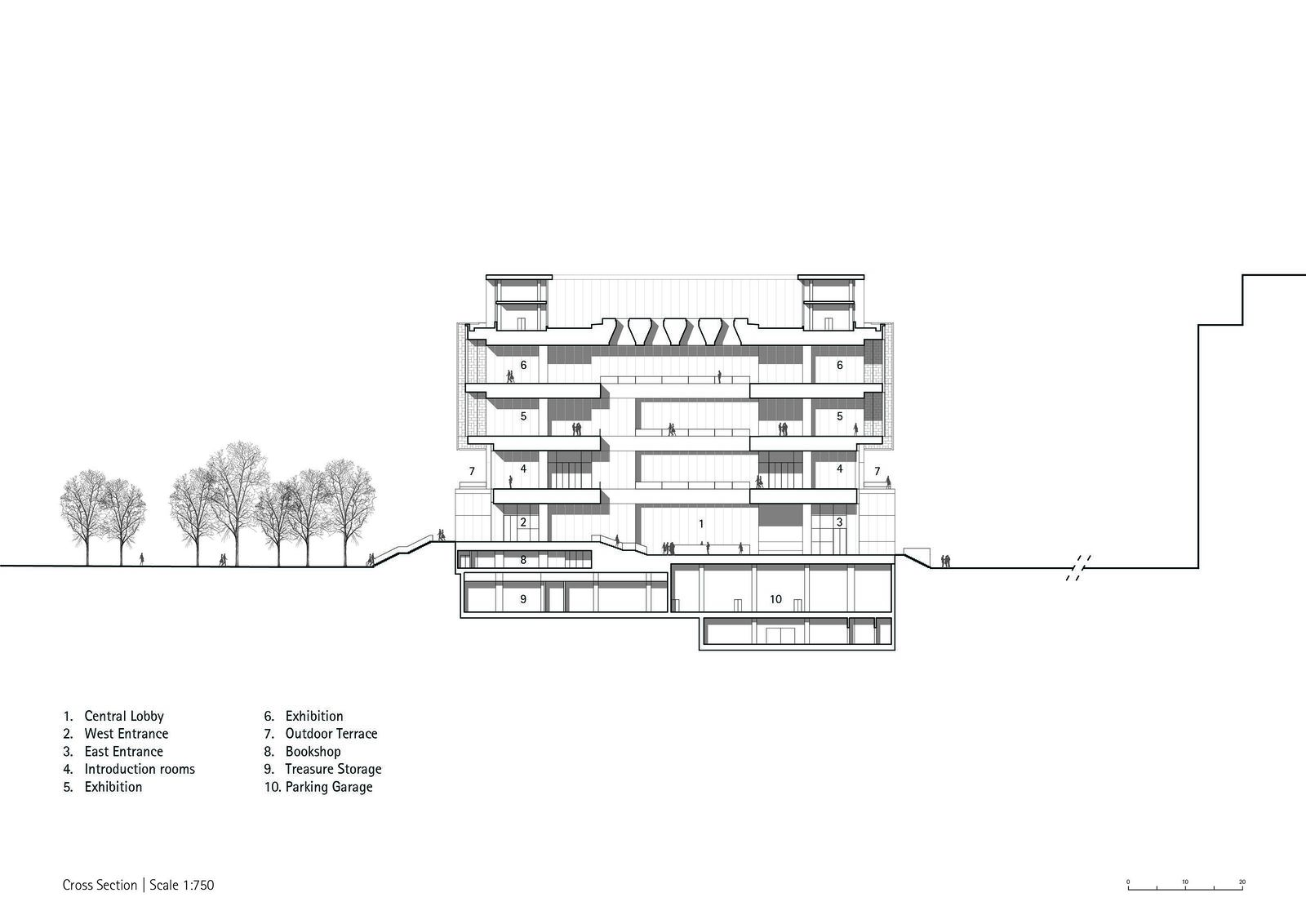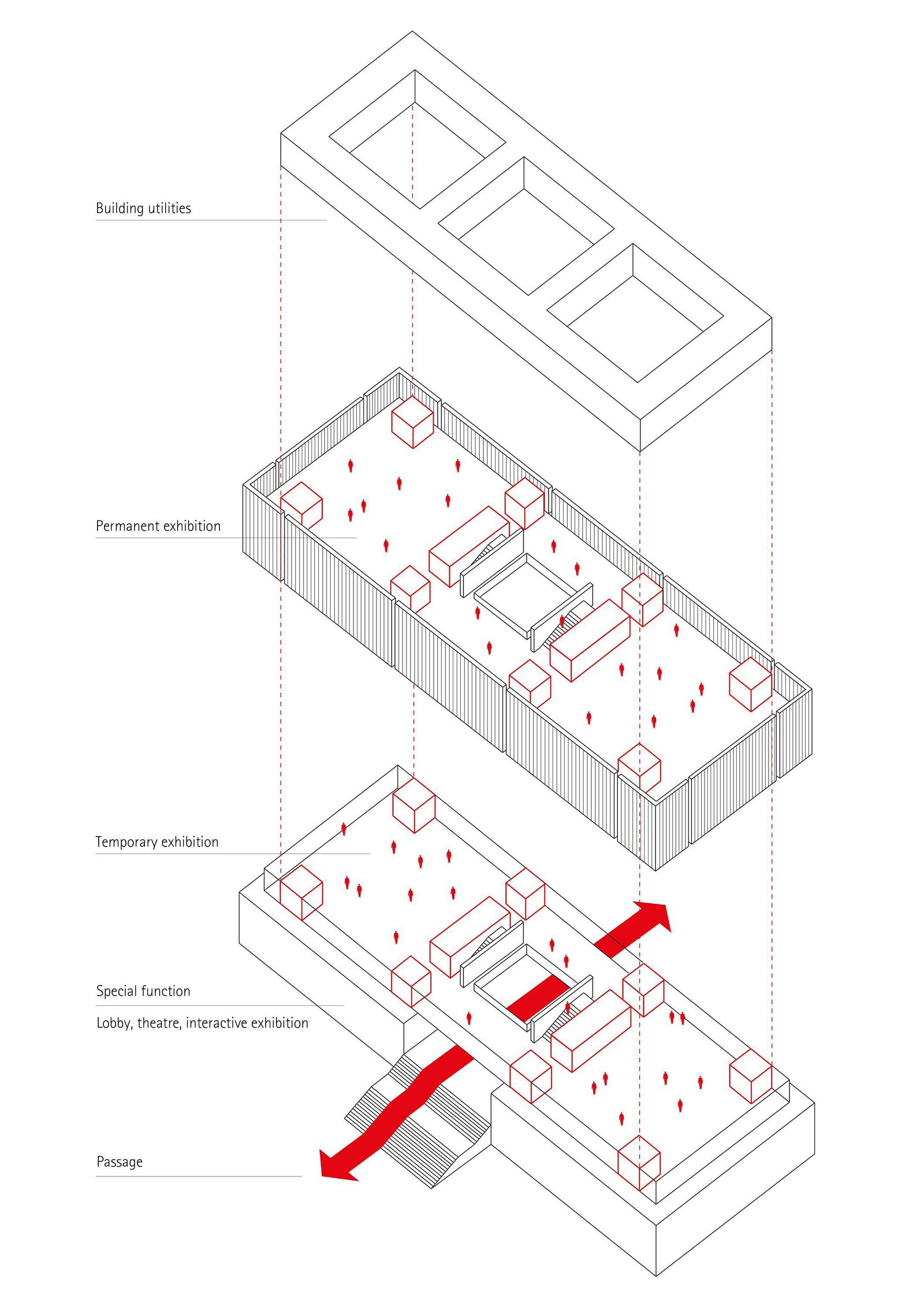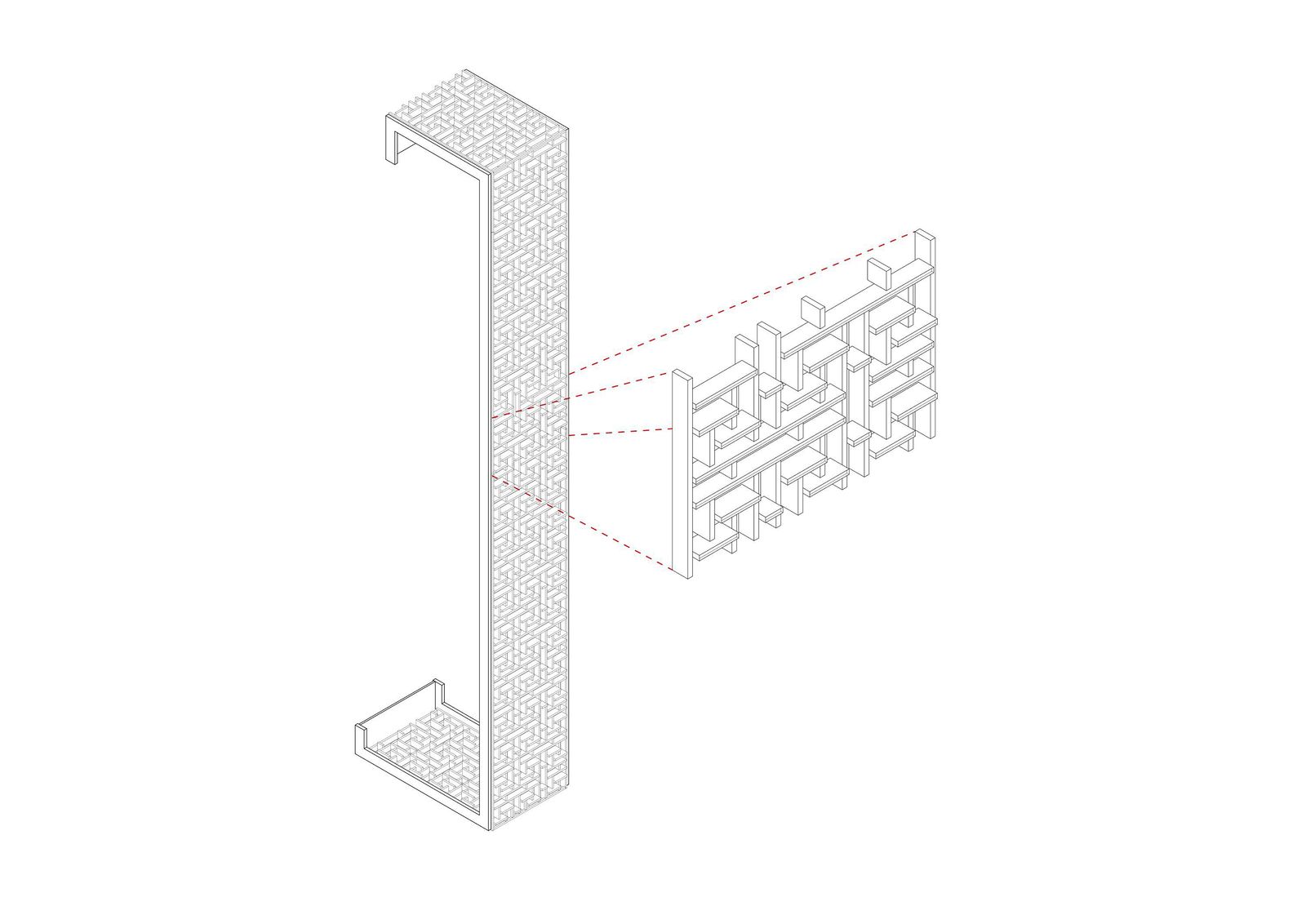Show house for arts and crafts
Chinese Traditional Culture Museum in Beijing
With the National Museum, which combines two new museums for the display of China’s cultural heritage, the architects von Gerkan, Marg and Partners (gmp) have completed an important component of the new cultural quarter in the Olympic Green in Beijing. The external design makes reference to the function of the building, which – with its changing color and light effects created by the sculptural structuring of the facade – is clearly visible from near and far.
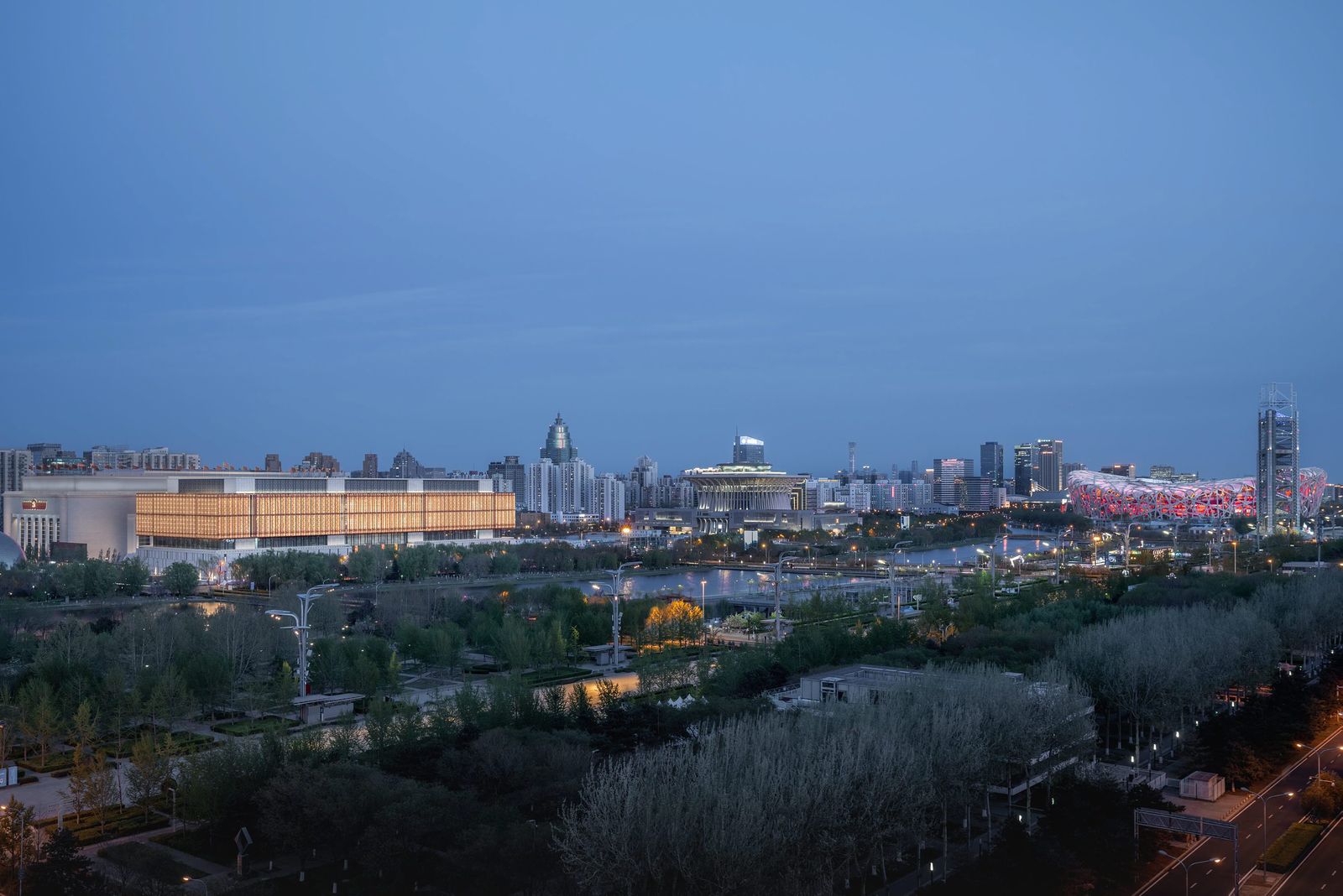
The museum building marks the northern end of Beijing’s Central Axis and is not far from the National Stadium, the Bird’s Nest, and the Asia Financial Center & AIIB Headquarters completed by gmp in 2021. For the first time, an opportunity is provided to present valuable collections of Chinese arts and crafts and items of intangible cultural heritage at national level.
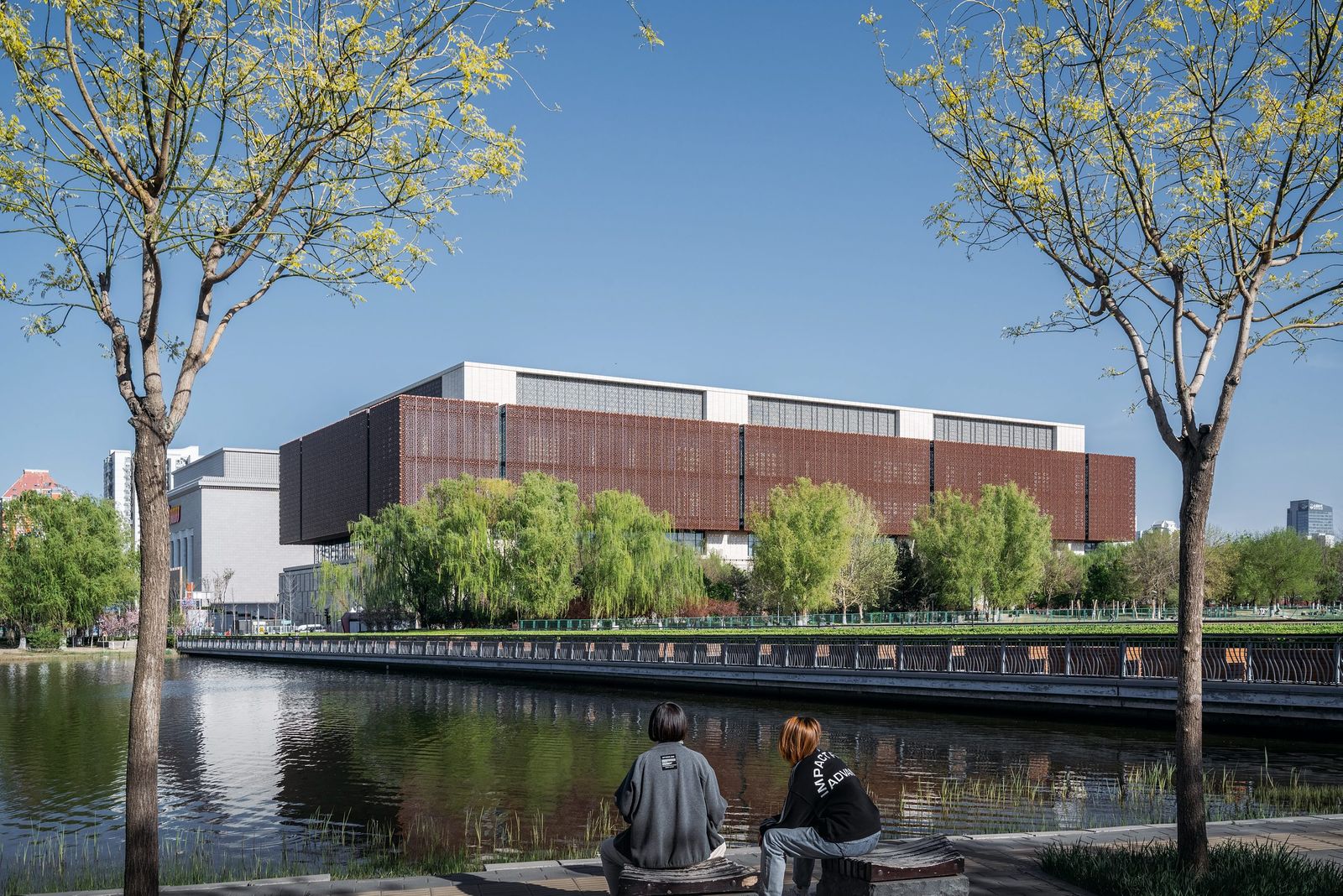
The dimensions of the new building, which is 50 meters high, about 200 meters long, and 75 meters deep, result from the urban design guidelines for cultural buildings along the River Yangshan. The building comprises three distinct dimensionally and structurally coordinated parts: the plinth built with light-colored Xiu Shi granite, the glazed intermediate area, and the copper-colored main body floating above.
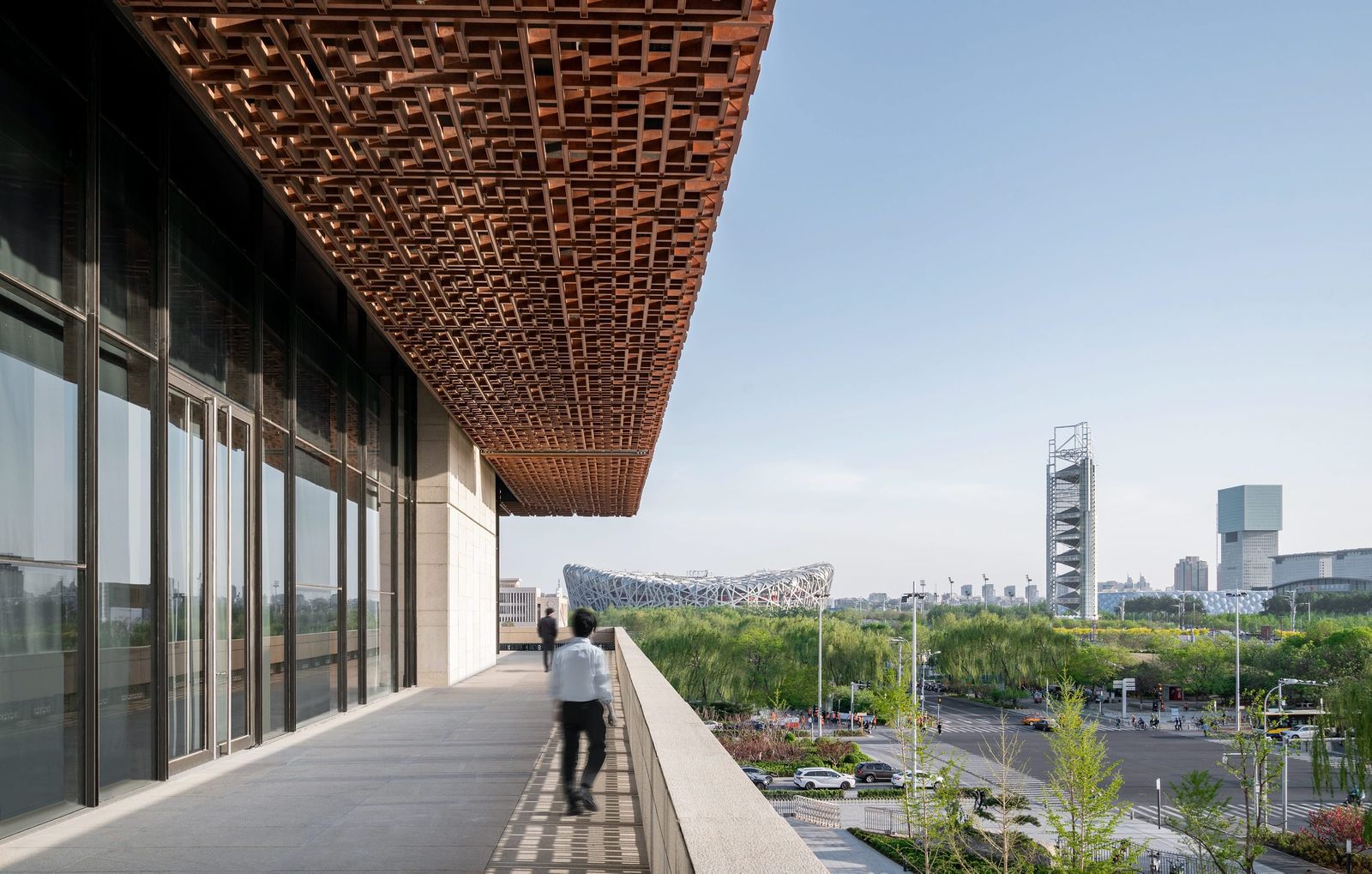
This division into three parts means that a roofed-over terrace is created at a height of 13.50 meters, providing public space all round the building. It is protected by the six-meter cantilever of the roof, which also functions as solar screening for the exhibition areas behind the glazed facade.
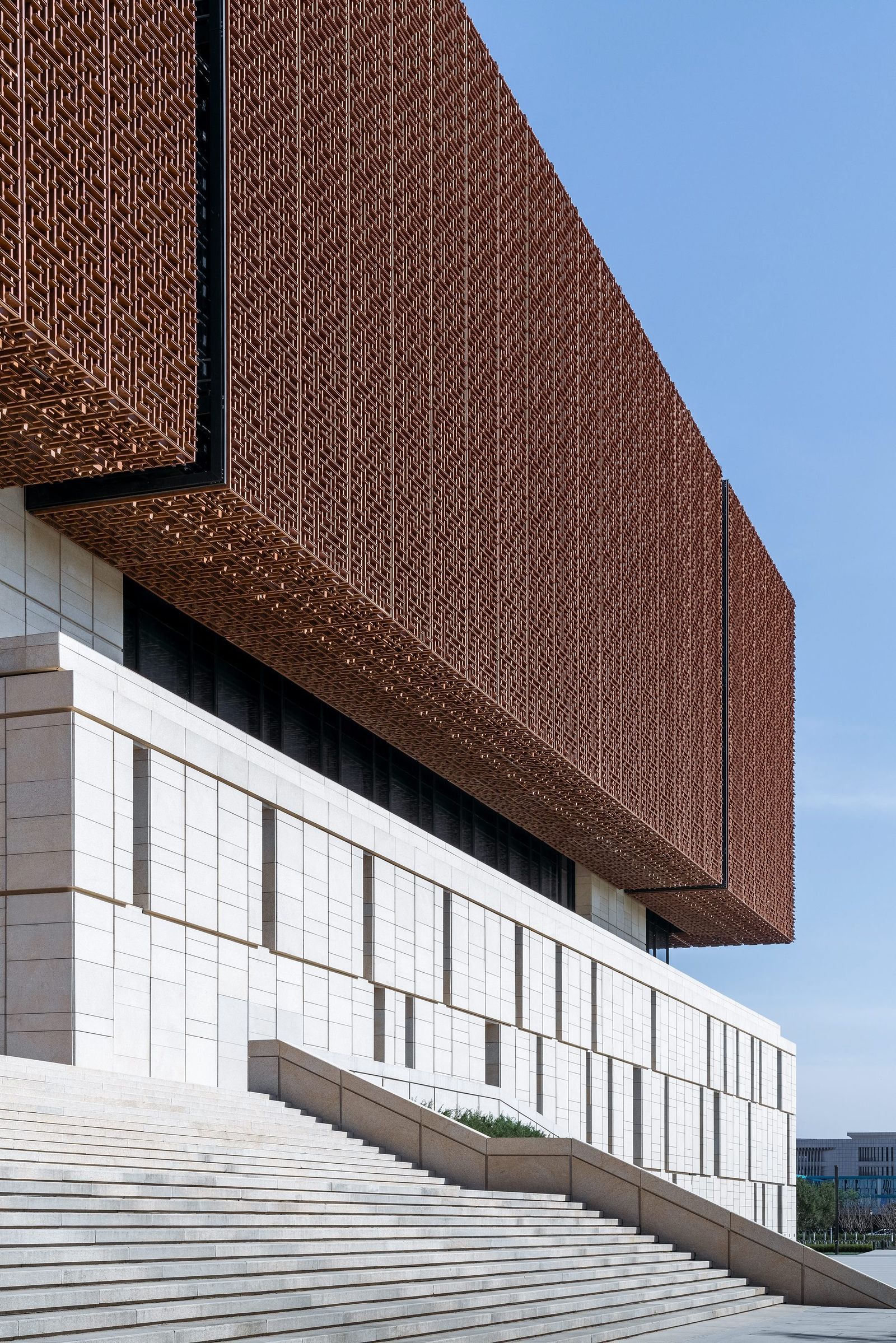
The two entrances to the museum are placed along its central axis, thus providing access points to the square to the east as well as to the river bank to the west. They lead to the shared central foyer and on to a multifunctional hall with about 400 seats and the exhibition hall for the temporary display of interactive formats. The space is open through the height of the building and receives daylight through square roof lights.
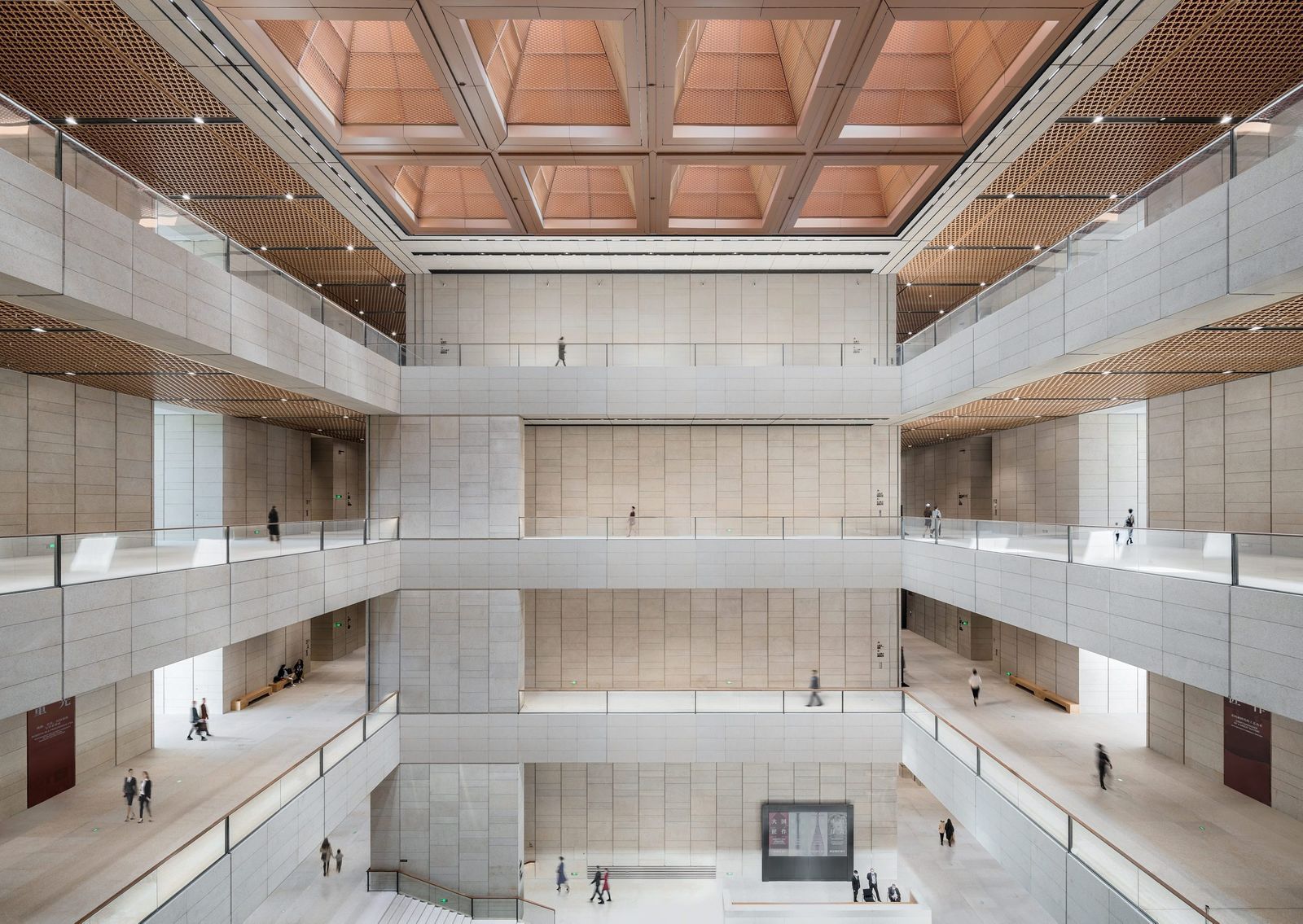
As visitors make their way along the balconies to the exhibition halls they enjoy varying vistas of the space. The detailing of the wall and ceiling elements resonates with the design of the building envelope in terms of structure and color. The back-lit hexagonal ceiling panels are reminiscent of woven patterns in Chinese crafts and create a calm atmosphere along the access corridors.
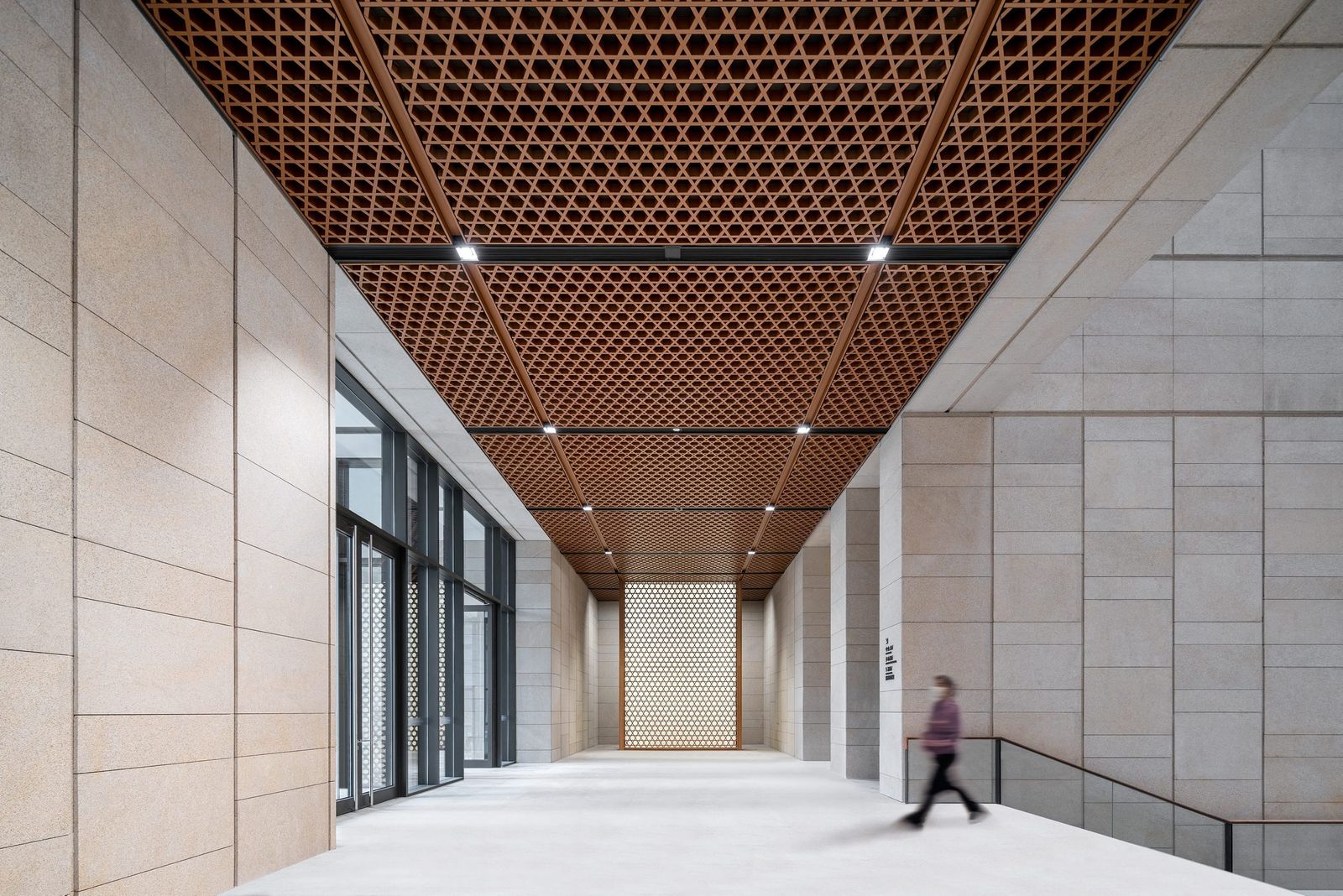
The museum functions are arranged over three stories, with the temporary exhibitions allocated to the glazed intermediate level and the permanent exhibitions to the two stories of the main building volume. The structural design of the building with its large column-free areas lends itself to a great variety of exhibition scenarios. Space is flexibly subdivided with room-high partition elements, which means that the two museums can easily be combined under one roof, even though they cover quite distinct subjects: on the one hand intangible cultural heritage such as dance and music, and on the other hand Chinese arts and crafts with numerous, sometimes quite small, objects.
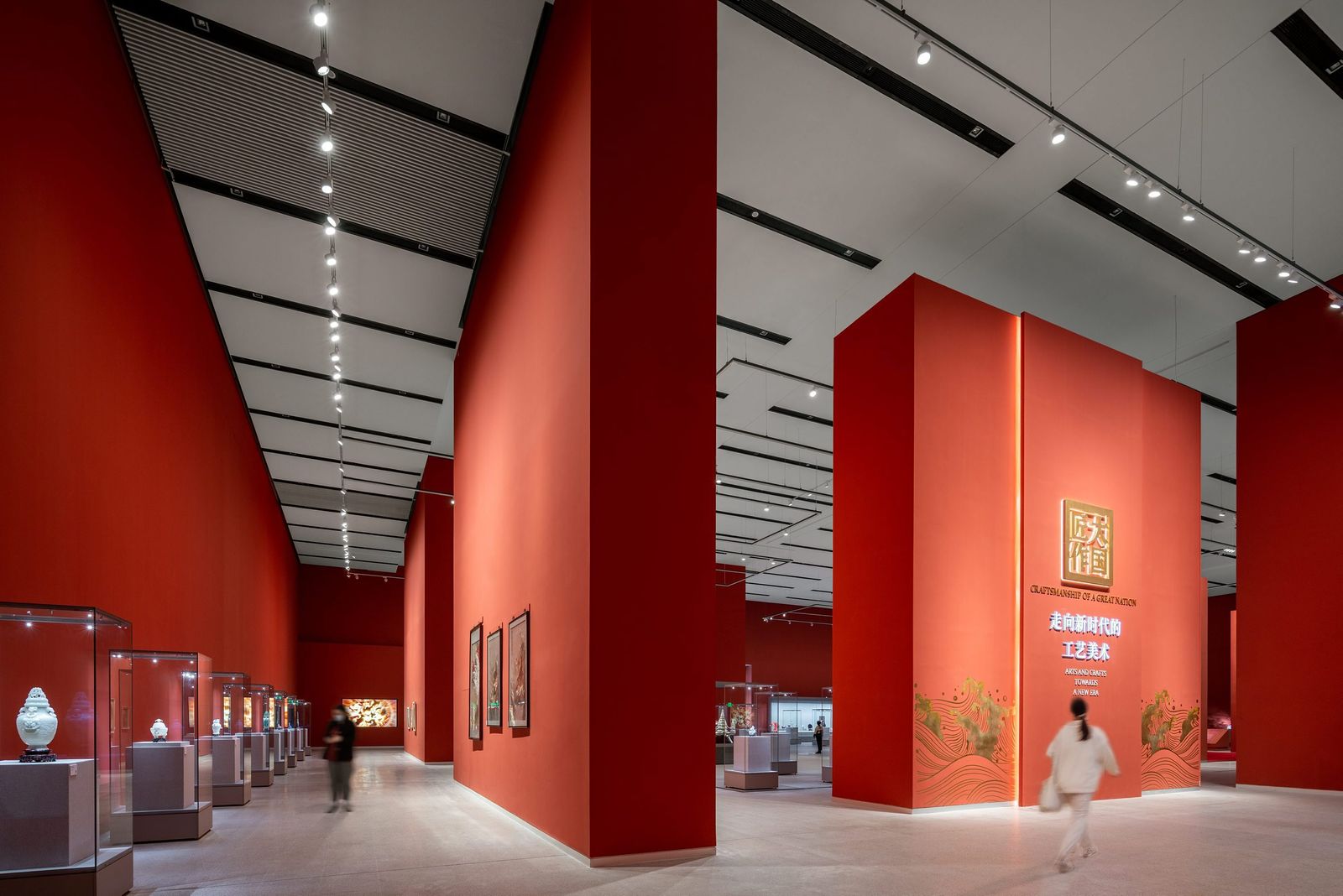
The structural pattern employed in the curtain wall facade relates to the patterns and structures found in the art and craft exhibits. With its solar screening it generates a distinct atmosphere with dappled light that is reminiscent of traditional Chinese interiors.
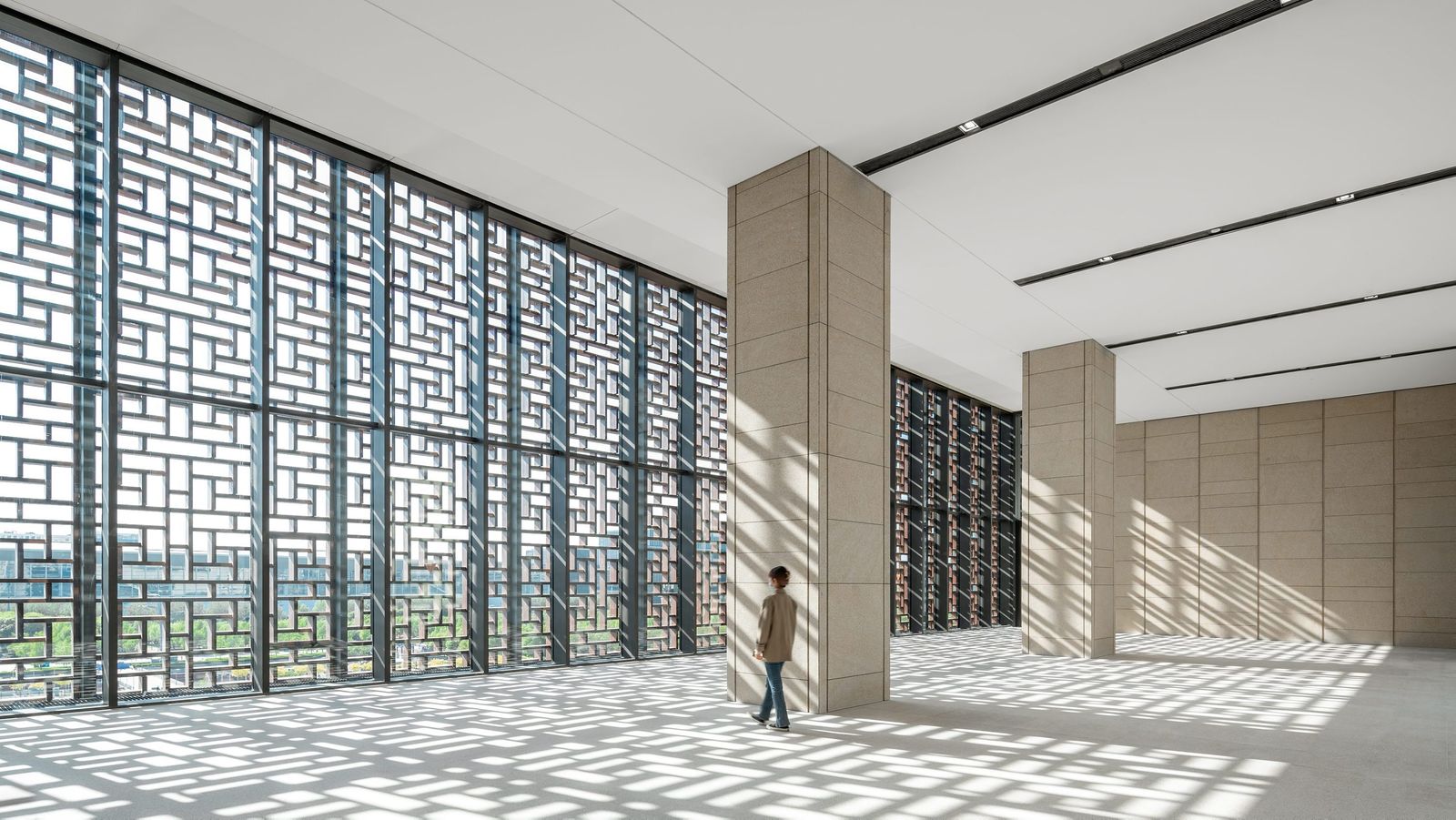
The three-dimensional effect of the building envelope is achieved with the large gap of almost one-and-a-half meters between the outer and inner facades and by a space structure consisting of pultruded profiles with a mat copper-colored coating that have been woven into a grid-like relief, projecting outward in the horizontal and inward in the vertical planes.
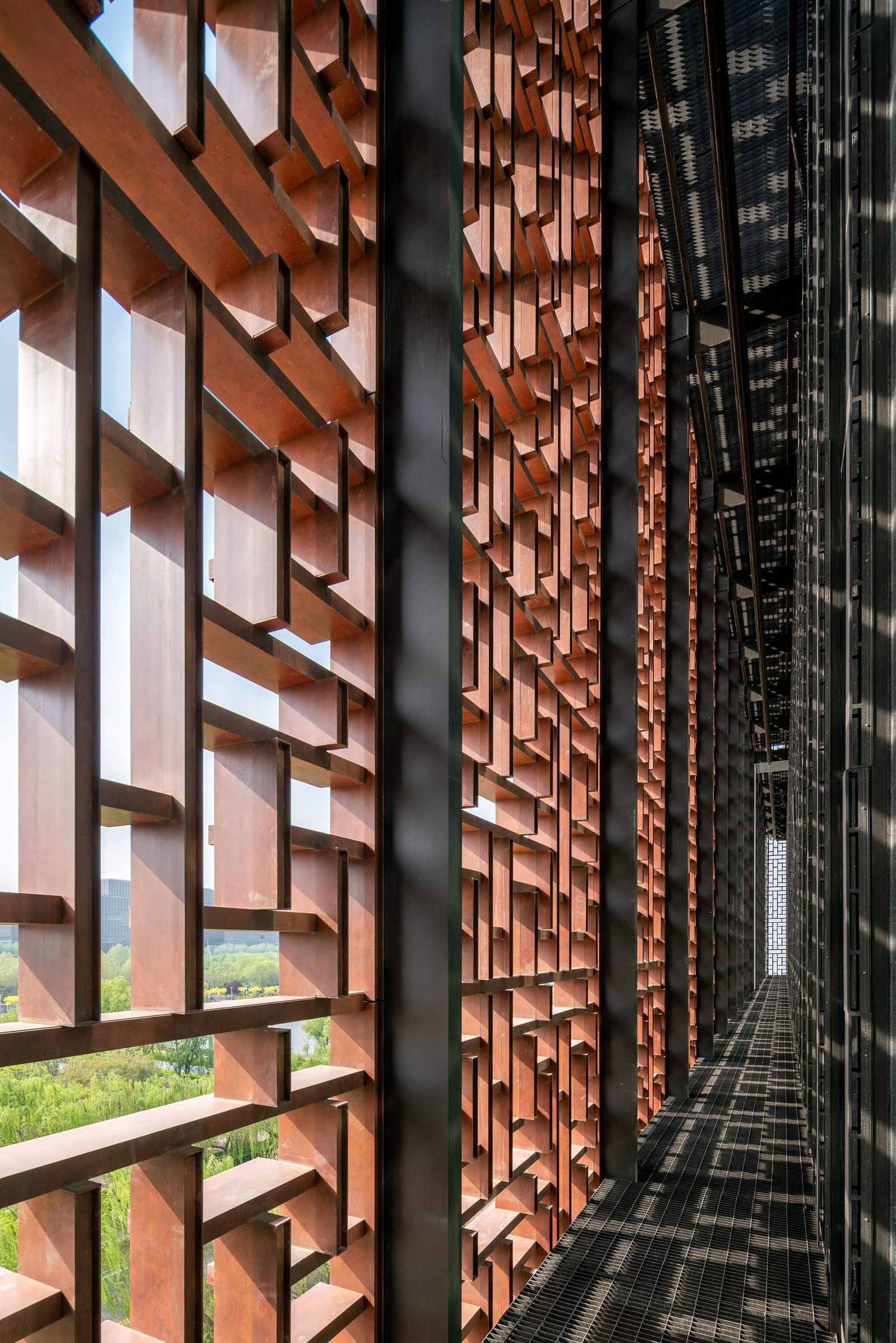
The homogenous facade pattern is made up of repetitions of a basic module of 3.00 by 2.20 meters to form vertical elements across the entire height of 22 meters of the two upper stories. This creates a facade without front and back. Owing to the backlighting, the structure and depth of the facade can be best appreciated at night when the radiant structure can be seen from afar, seeming to float above the Olympic Green.
